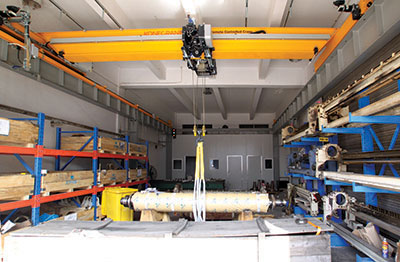World manufacturer BHS’ Shanghai plant manufactures, assembles and dispatches more than 500 corrugated production units a year, plus more than 20 complete corrugated production lines. When business was booming, the company wanted to ensure materials handling equipment reliably met demands and that critical machinery was backed up by maintenance and safety standards. New overhead cranes and a partnership with the crane supplier have helped prevent production stoppages as well as lifting and maintenance hazards.
The company’s 15 sets of overhead cranes (Konecranes) are vital to every phase of production and distribution.
“For us, the initial cost basis of cranes is naturally important, but what is crucial is uptime and reliability,” says BHS Shanghai chief operating officer Johnson Wu. “Our cranes are very reliable. They are smooth and quiet and very popular with our operators. Previous brands were cheap to buy, but we got a lot of complaints from operators and they needed a lot of maintenance.”
The partnership with the supplier depends on a comprehensive knowledge of operations, which ensures equipment choices are optimized, maintenance issues can be predicted long before breakdowns occur, and that there is no delay in getting spares and service when needed.
“Precision and safety are very important in the manufacturing and testing areas,” Wu says. “The components we produce are valuable and damage can cost us a lot, while injuries cannot be allowed.”
The newest cranes were selected for BHS Shanghai as well as its Changzhou roller manufacturing plant, where the cranes’ larger hook area coverage and compact operation consumed less space.
“Their wireless radio control is very good and convenient for our operations. Using it, our workers can operate the crane from any position around the crane they want,” Wu says. “The compact design means we can arrange work at both ends of the workshop, saving a lot of working cycle time.”
Article topics








